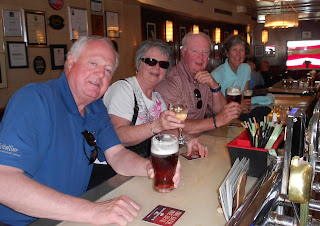I've been noticing lately, a lot, how many references are
made to age, by and about people of all ages. A recent blog post by a friend
began “I'm in my mid-forties as I write this…”; someone else said, “now that I'm
almost 70…”; another was “(what can you expect) she’s only in her 20’s”. The worst was a comment about friends who are
in their 80’s “let’s face it they aren't going to be around for many more years”,
which in this case meant their opinion didn’t matter. I am guilty of saying “our
window of opportunity is getting smaller”. Inevitably age references imply a
stereotype or a limiting category and yet we are constantly being reminded that
age isn't an actual barrier, rather an artificial one: we see children with
mature abilities and elders climbing mountains.
I think we put too much emphasis on birth dates and
birthdays, especially the decade ones. It starts in childhood when for some
reason there is something special about getting to be a “big girl or boy” and
evolves through excitement, denial, anxiety, and, maybe, to pride of
accomplishment. I didn’t mind turning 30, but at 31 it seemed like the tide had
turned and I was on the slippery downhill slope even though only one more day
had clicked by on the calendar. Age numbers remind me of golf scores. Lower is
better and if you pay too much attention to the score you choke and mess up the
next shot.
So here’s a challenge for you. Pay attention to how many age
references you hear and think about what is really being said. Is the older
person feeling frightened or marginalized, is the young person feeling
dismissed, is the reference intended to marginalize or dismiss?
If you are talking to me, I don't want to know how old you
are. I want to know who you are, what you do with your time, what you like, what
you believe. The only useful information about your age is what piece of
history you've experienced and what you've contributed to that history. Whether
you are 10 or 92, I want to enjoy your company, hear your stories, and laugh
with you. I want to hear what your next adventure is going to be.
And I won't be having any more birthdays although there may
still be a party in February.



















































